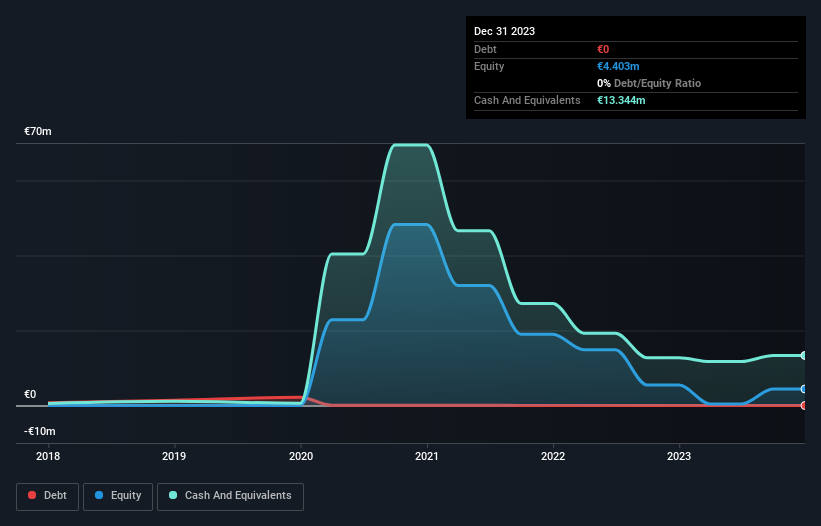We Think Exasol (ETR:EXL) Can Easily Afford To Drive Business Growth
Even when a business is losing money, it's possible for shareholders to make money if they buy a good business at the right price. For example, although Amazon.com made losses for many years after listing, if you had bought and held the shares since 1999, you would have made a fortune. Having said that, unprofitable companies are risky because they could potentially burn through all their cash and become distressed.
So should Exasol (ETR:EXL) shareholders be worried about its cash burn? For the purpose of this article, we'll define cash burn as the amount of cash the company is spending each year to fund its growth (also called its negative free cash flow). First, we'll determine its cash runway by comparing its cash burn with its cash reserves.
Check out our latest analysis for Exasol
Does Exasol Have A Long Cash Runway?
A company's cash runway is calculated by dividing its cash hoard by its cash burn. When Exasol last reported its December 2023 balance sheet in May 2024, it had zero debt and cash worth €13m. In the last year, its cash burn was €6.4m. That means it had a cash runway of about 2.1 years as of December 2023. Importantly, though, analysts think that Exasol will reach cashflow breakeven before then. In that case, it may never reach the end of its cash runway. The image below shows how its cash balance has been changing over the last few years.
How Well Is Exasol Growing?
Happily, Exasol is travelling in the right direction when it comes to its cash burn, which is down 56% over the last year. And while hardly exciting, it was still good to see revenue growth of 5.9% during that time. On balance, we'd say the company is improving over time. While the past is always worth studying, it is the future that matters most of all. For that reason, it makes a lot of sense to take a look at our analyst forecasts for the company.
How Easily Can Exasol Raise Cash?
Exasol seems to be in a fairly good position, in terms of cash burn, but we still think it's worthwhile considering how easily it could raise more money if it wanted to. Companies can raise capital through either debt or equity. Many companies end up issuing new shares to fund future growth. We can compare a company's cash burn to its market capitalisation to get a sense for how many new shares a company would have to issue to fund one year's operations.
Since it has a market capitalisation of €67m, Exasol's €6.4m in cash burn equates to about 9.5% of its market value. That's a low proportion, so we figure the company would be able to raise more cash to fund growth, with a little dilution, or even to simply borrow some money.
Is Exasol's Cash Burn A Worry?
It may already be apparent to you that we're relatively comfortable with the way Exasol is burning through its cash. For example, we think its cash burn reduction suggests that the company is on a good path. On this analysis its revenue growth was its weakest feature, but we are not concerned about it. There's no doubt that shareholders can take a lot of heart from the fact that analysts are forecasting it will reach breakeven before too long. Taking all the factors in this report into account, we're not at all worried about its cash burn, as the business appears well capitalized to spend as needs be. Readers need to have a sound understanding of business risks before investing in a stock, and we've spotted 3 warning signs for Exasol that potential shareholders should take into account before putting money into a stock.
Of course Exasol may not be the best stock to buy. So you may wish to see this free collection of companies boasting high return on equity, or this list of stocks that insiders are buying.
Have feedback on this article? Concerned about the content? Get in touch with us directly. Alternatively, email editorial-team (at) simplywallst.com.
This article by Simply Wall St is general in nature. We provide commentary based on historical data and analyst forecasts only using an unbiased methodology and our articles are not intended to be financial advice. It does not constitute a recommendation to buy or sell any stock, and does not take account of your objectives, or your financial situation. We aim to bring you long-term focused analysis driven by fundamental data. Note that our analysis may not factor in the latest price-sensitive company announcements or qualitative material. Simply Wall St has no position in any stocks mentioned.

